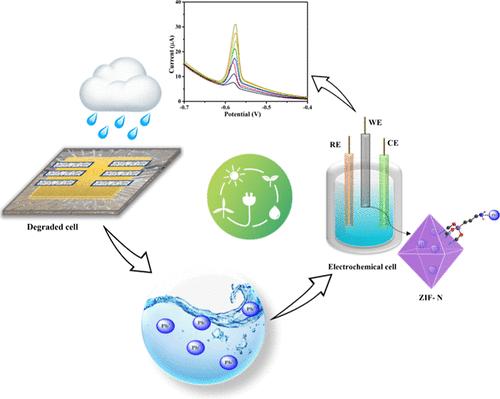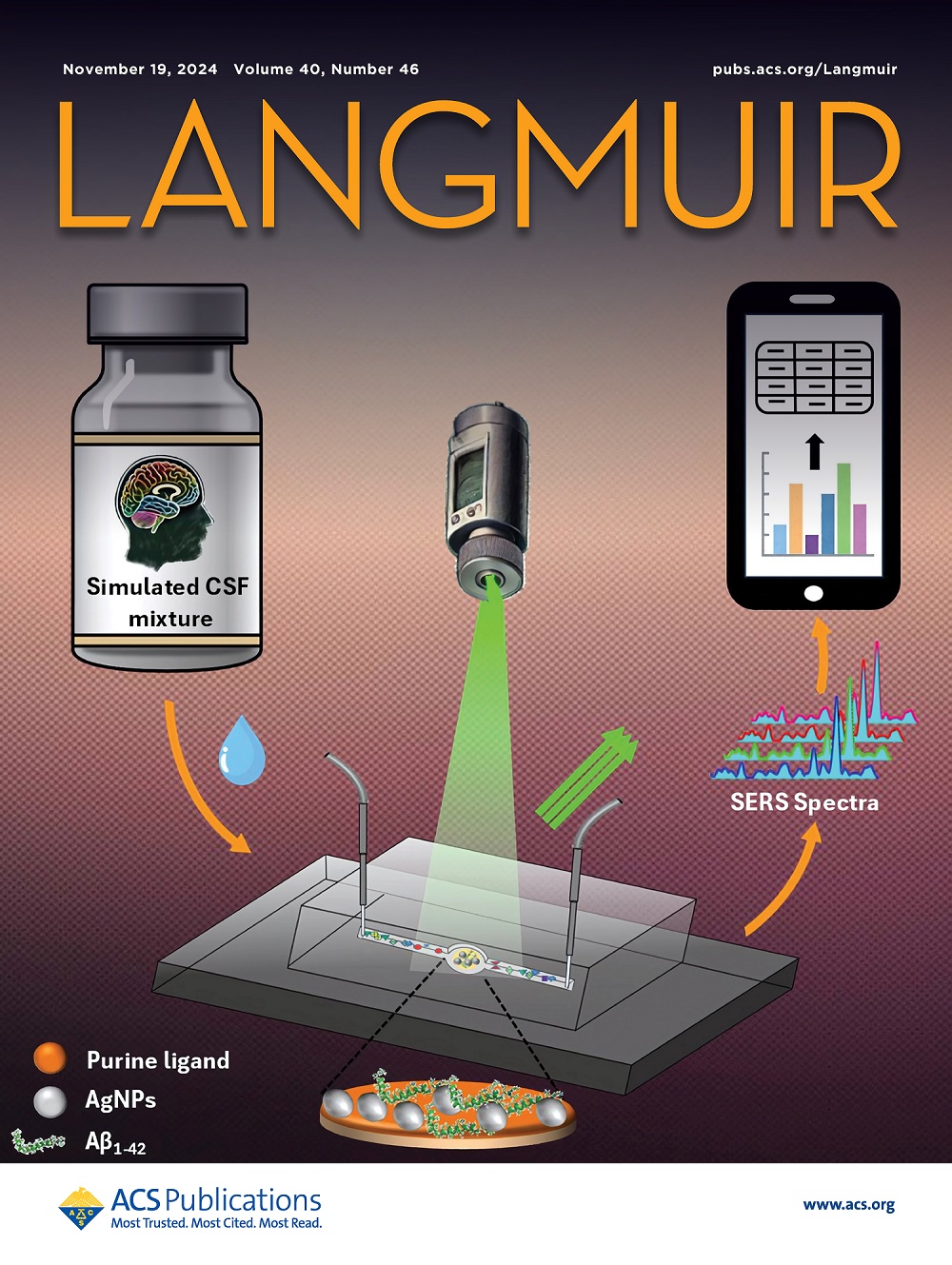Biomimetic Approaches for Detecting Lead in Water Contaminated by Perovskite Solar Cells
IF 3.7
2区 化学
Q2 CHEMISTRY, MULTIDISCIPLINARY
引用次数: 0
Abstract
Perovskite-based solar cells (PSCs) have emerged as highly promising in photovoltaics. New techniques are being developed for enhancing the device’s lifetime and performance. However, damaged or end-of-life lead-perovskite solar modules pose significant health and environmental risks due to the release of Pb2+ ions into the environment. This work developed an electrochemical detection of lead ions leached from degraded PSCs to address this issue. The biomimicking architecture of the sensing moiety was designed to replicate the interaction between lead ions and amino acids in various proteins, enabling more specific detection. Here, aminopropyl trimethoxysilane-functionalized metal–organic framework/ZIF-67 (ZIF-N) was used to detect lead, specifically in water leaked from lead-based PSCs. The ZIF-67-based sensing element, combined with a carbon paste electrode, exhibited a selective interaction with lead ions, allowing for the detection of lead in water as low as 60 ppb. This detection strategy relies on measuring changes in electronic properties using an electrochemical approach. Real-time lead detection in perovskite-contaminated water was successfully demonstrated using the differential pulse voltammetry technique, with ZIF-N as the sensing element.

求助全文
约1分钟内获得全文
求助全文
来源期刊

Langmuir
化学-材料科学:综合
CiteScore
6.50
自引率
10.30%
发文量
1464
审稿时长
2.1 months
期刊介绍:
Langmuir is an interdisciplinary journal publishing articles in the following subject categories:
Colloids: surfactants and self-assembly, dispersions, emulsions, foams
Interfaces: adsorption, reactions, films, forces
Biological Interfaces: biocolloids, biomolecular and biomimetic materials
Materials: nano- and mesostructured materials, polymers, gels, liquid crystals
Electrochemistry: interfacial charge transfer, charge transport, electrocatalysis, electrokinetic phenomena, bioelectrochemistry
Devices and Applications: sensors, fluidics, patterning, catalysis, photonic crystals
However, when high-impact, original work is submitted that does not fit within the above categories, decisions to accept or decline such papers will be based on one criteria: What Would Irving Do?
Langmuir ranks #2 in citations out of 136 journals in the category of Physical Chemistry with 113,157 total citations. The journal received an Impact Factor of 4.384*.
This journal is also indexed in the categories of Materials Science (ranked #1) and Multidisciplinary Chemistry (ranked #5).
 求助内容:
求助内容: 应助结果提醒方式:
应助结果提醒方式:


